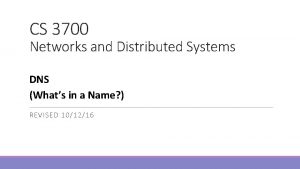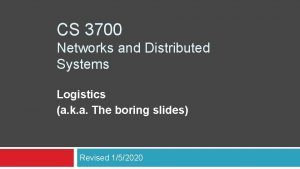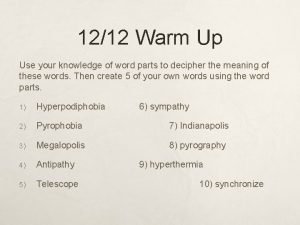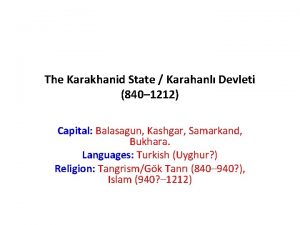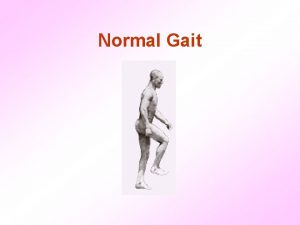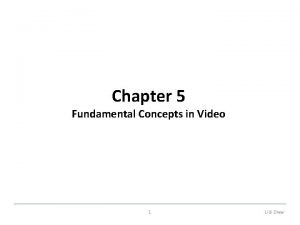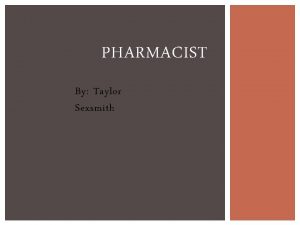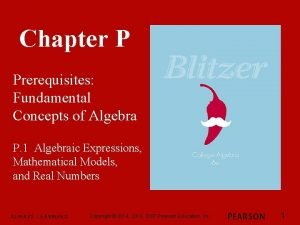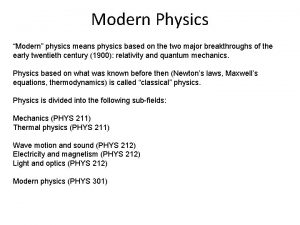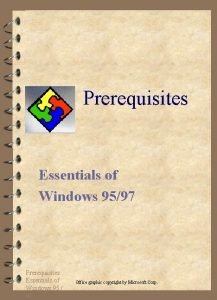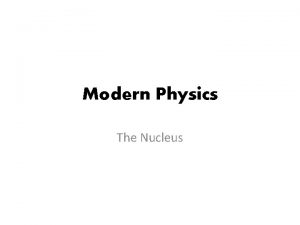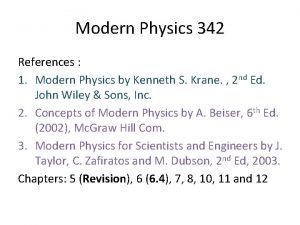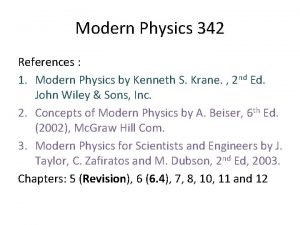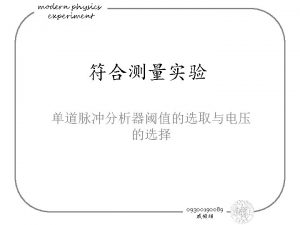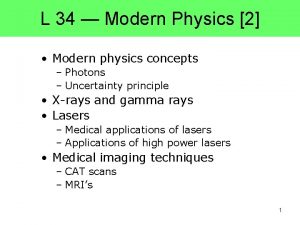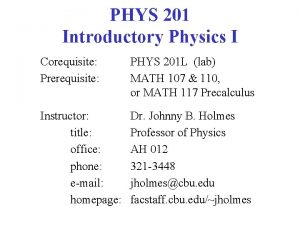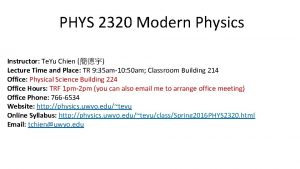PHYS 3700 Modern Physics q Prerequisites PHYS 1212
















- Slides: 16

PHYS 3700 Modern Physics q Prerequisites: PHYS 1212, MATH 2500. Useful to have PHYS 3900 or MATH 2700 (ordinary differential equations) as co-requisite, but not required. q Overview (generally shallow) of theoretical physics developed after ~1900 (i. e. , non-classical). Topics will include special relativity, particle-wave duality, quantum mechanics, and applications to atomic, molecular, nuclear, and solid state physics. q. Aims of course: - teach you the fundamental principles of modern physics - teach you how to apply these principles in practical problem solving

A Building-Up of Principles Algebra -> geometry -> trigonometry-> calculus -> classical mechanics -> thermodynamics -> electricity/magnetism -> special relativity -> differential equations -> quantum mechanics -> applications What is Modern Physics? Before 1900, many ``great’’ physicists believed that all the fundamentals of physics were known and all of the problems solved! ``Physical discoveries in the future a matter of the sixth decimal place’’ - Michelson There were some experimental results which, however, defied explanation (e. g. , the discrete spectrum of the hydrogen atom).

The Classification of Physics Classical Physics - everyday speeds and sizes (Newton, …) Quantum Physics - very small (Schroedinger …) Relativistic Physics - Very fast (Einstein, …) Relativistic Quantum Physics – very small and very fast (Dirac, …) Quantum electrodynamics Quantum chromodynamics Grand unified theory String theory

Chapter 2: Special Relativity Galilean transformation (classical velocity transformation): q S and S’ are inertial S’ y’ frames v y q S’ moves away from S (x’, t’) vt with constant speed v x’ S (at rest) x An ``event’’ in frame S has coordinates (x, y, z, t) while in S’ it has (x’, y’, z’, t’) q An inertial frame of reference is one in which Newton’s Laws of Motion hold

When S and S’ are aligned, x=x’ and t=t’ In classical mechanics, we then say that t=t’ for all time (an approximation, but we did not know it!) We then get the transformation equations: Then take first derivative with respect to t or

However, Maxwell’s equations of electromagnetism predict that light is an electromagnetic wave and its speed is a constant, c=1/( 0 0)1/2= 3. 00 x 108 m/s. Today it is known to be exactly 2. 99792458 x 108 m/s. If the laws of mechanics hold in all inertial frames, then the laws of electromagnetism should also, But, theories of classical mechanics and electromagnetism are not compatible!

Conceptual example Consider a space-ship moving at 0. 7 c (frame S’). Anna is on board the space-ship and she fires an electron gun. The electrons travel at 0. 8 c with respect to the ship in the same direction as the ship. Bob is at rest (frame S) with respect to the ship. At what speed does he see the electrons traveling? By the Galilean Transformation, the speed of the electrons in frame S is Not possible!

Replace the electron beam by a light beam. The light travels at speed c. But waves travel with speed relative to some medium (sound, waves on a string, etc. ). Light and all other electromagnetic waves can travel through a medium or a vacuum. It was proposed in the late 19 th century that the universe was filled with some medium called the ether. So, c was the speed of light with respect to the ether.

In 1887 Michelson and Morley tried to measure the speed the Earth moved through the ether. But they could not detect this motion -> there is no ether. (see Appendix A on the Michelson-Morley experiment) Either Maxwell’s electromagnetism was wrong or the Galilean Transformation (Newtonian mechanics) was “incorrect” Other evidence against Newtonian mechanics: - It has been observed in modern accelerators that no massive particle can exceed a speed of c - Newtonian mechanics has no speed limit

Postulates of Special Relativity 1. The laws of physics are the same in all inertial frames of reference 2. The speed of light is independent of the motion of the source The implications of these postulates are numerous and profound. We must adjust how we think about space and time!

Postulate 1 (alternate): Absolute uniform motion cannot be detected Postulate 2 (alternate): The speed of light in a vacuum has the same value in all inertial frames of reference (every observer measures the same value for the speed of light) In frame transformations, we must abandon the concept of absolute simultaneity. Instead we adopt relative simultaneity to relate S’(x’, t’) and S(x, t)

The Lorentz Transformation Derived in Harris (pp. 14 -16) When v<<c, v 1, the Galilean Transformation is recovered Required by the Correspondence Principle

Correspondence Principle says: a new, non-classical theory, must agree within some appropriate limit with an existing (correct) classical theory v can vary from 1 (v=0) to ∞ (v=c) there is a maximum v

The Lorentz equations relate an event in frame S to frame S’ Can also be written (by symmetry) Let’s consider two events in S (x 1, t 1), (x 2, t 2) in S’ (x 1’, t 1’), (x 2’, t 2’) Write Lorentz equations in terms of length and time intervals

Let the two events occur in the same location in frame S’, x 1’=x 2’. This gives Note events do not occur in the same location in S. Now substitute into the time interval equation

The time interval for which the events occur at the same location (frame S’) is called the Proper Time = to Since v≥ 0 and v≥ 1, t≥ to Time dilation
 Cs3700 northeastern
Cs3700 northeastern 3700.networks
3700.networks 3700.networks
3700.networks 8000-3700
8000-3700 Call xxxx
Call xxxx A word 1212
A word 1212 Escuela 1212 sunchales
Escuela 1212 sunchales Karahanli dynasty
Karahanli dynasty Why does it happen
Why does it happen University physics with modern physics fifteenth edition
University physics with modern physics fifteenth edition Prerequisites for ssdt
Prerequisites for ssdt Medical term for normal gait
Medical term for normal gait Fundamental concepts in video
Fundamental concepts in video Waterloo pharmacy prerequisites
Waterloo pharmacy prerequisites Introduction about recruitment and selection
Introduction about recruitment and selection Ucla masters entry nursing
Ucla masters entry nursing Chapter p prerequisites
Chapter p prerequisites
